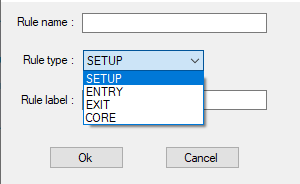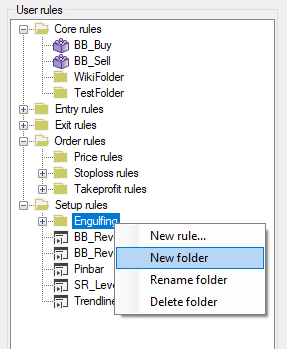User Rules: Difference between revisions
No edit summary |
|||
| Line 11: | Line 11: | ||
* [[Core Rules|Core Rules]] | * [[Core Rules|Core Rules]] | ||
* [[Setup Rules|Setup Rules]] | * [[Setup Rules|Setup Rules]] | ||
[[File:Usertree entryrule.png|left|alt=Usertree entryrule|Usertree entryrule]] [[Entry Rules|Entry Rules]] | |||
* [[Exit Rules|Exit Rules]] | * [[Exit Rules|Exit Rules]] | ||
<br> | <br> | ||
Revision as of 12:31, 24 August 2021
Summary
The User Rules are the Rules created and modified by the user. These Rules can rely on the Default Rules, provided by the software, and/or on the User Rules themselves.
These Rules can be modified or deleted by the user.
A User Rule can't reference itself but can reference any other user-defined User Rules.
Rules types
The Rule Manager can define the following rule types :

Rule creation
By clicking on the button "New Rule..." (bottom right-corner of the Rule Manager), you can create any type of Rule needed.
The Rule name helps to identify the Rule within the software. The Rule type allows you to define a corresponding Rule.
And the Rule label is the information you wish to associate with this rule.

You can add Default Rules or User Rules on an existing Rule by drag&dropping it on the main pane.
Rules organization
Since the Rule Manager can help defining complex and elaborate Rules, eventually a complete Trading System, it's important to organize the Rules structure.
Each User Rules can be placed in any folders created by the user in order to maintain lisibility. This Rule structure will be displayed during Backtest, to attach or drag&drop a Rule to a chart for example.

Attaching and using User Rules